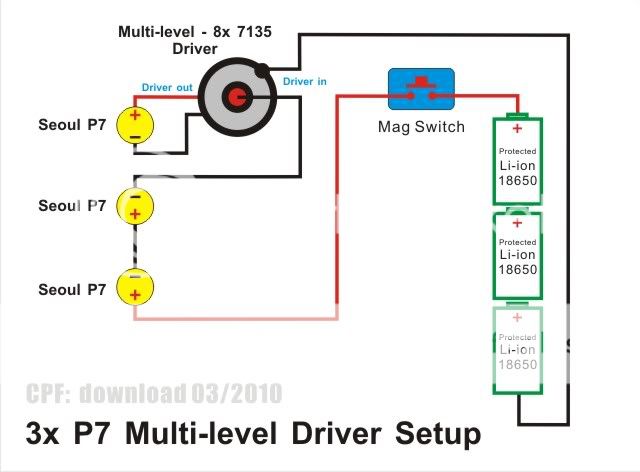Hi all! I'm impressed about how much information you are giving me.
George Thanks a lot for showing here, I've found drivers like yours (yet) I know that quality has a price but...me poor men have a lot of free time (at least till September 28) but little money. So I'll keep looking around for something cheaper. By the moment your H6CC is the best option I've in my wallet.
Thinking about AMC7135 options... It's possible to change current "activating" more or less chips. I mean for 2.8A to use 8 "active" and "disconnect" 4 for 1.4A. That makes sense or is another stupid idea?
It's possible to change current "activating" more or less chips. I mean for 2.8A to use 8 "active" and "disconnect" 4 for 1.4A. That makes sense or is another stupid idea?
This way I'll not use any kind of PWM. May be use two 1.4A drivers and put them to work on parallel or just one at a time. I don't know how to do it but may be it would work. At least until I have money for the much more elegant H6CC solution.
Hanachan, what to say awesome
Tplas could you give me a bit more information (leds, battery pack...)
Thanks for the help to every one.
Best regards from Zaragoza
Again thank to every one for your help.
George Thanks a lot for showing here, I've found drivers like yours (yet) I know that quality has a price but...me poor men have a lot of free time (at least till September 28) but little money. So I'll keep looking around for something cheaper. By the moment your H6CC is the best option I've in my wallet.
Thinking about AMC7135 options...
 It's possible to change current "activating" more or less chips. I mean for 2.8A to use 8 "active" and "disconnect" 4 for 1.4A. That makes sense or is another stupid idea?
It's possible to change current "activating" more or less chips. I mean for 2.8A to use 8 "active" and "disconnect" 4 for 1.4A. That makes sense or is another stupid idea?This way I'll not use any kind of PWM. May be use two 1.4A drivers and put them to work on parallel or just one at a time. I don't know how to do it but may be it would work. At least until I have money for the much more elegant H6CC solution.
Hanachan, what to say awesome
Tplas could you give me a bit more information (leds, battery pack...)
Thanks for the help to every one.
Best regards from Zaragoza
Again thank to every one for your help.











